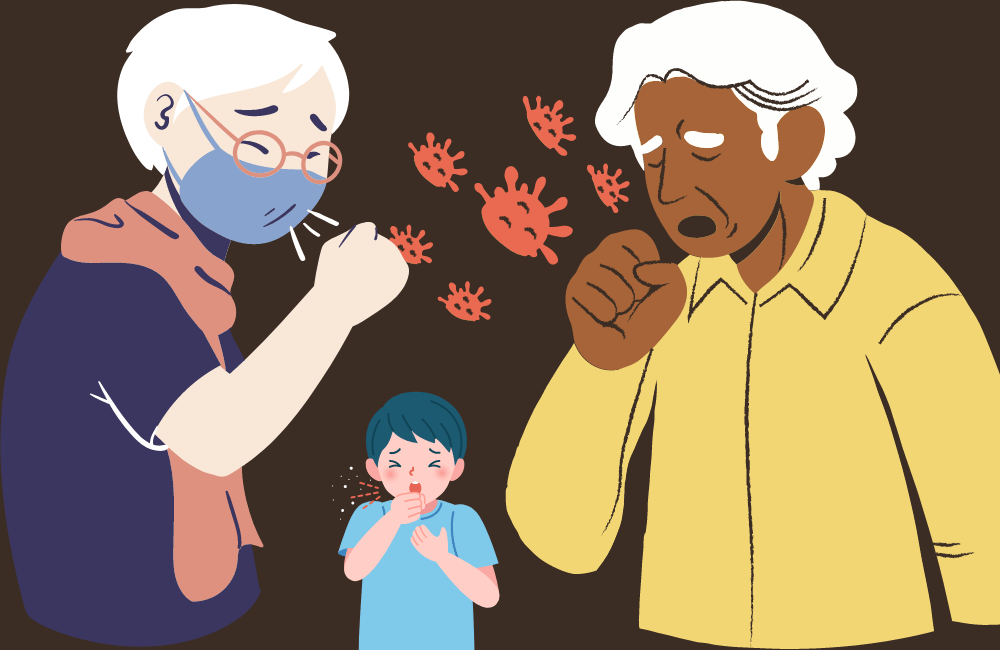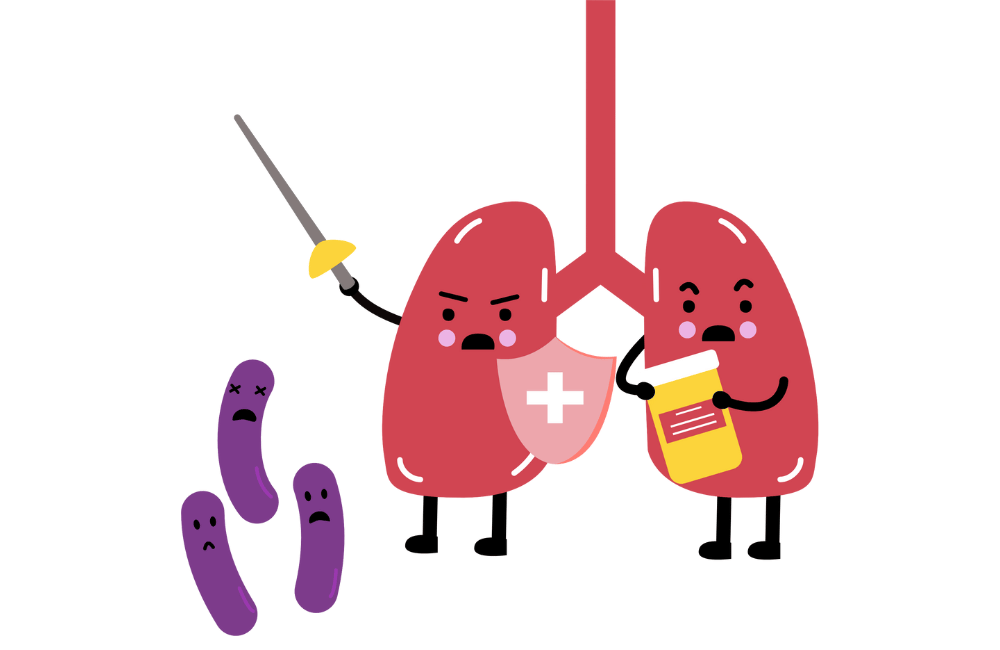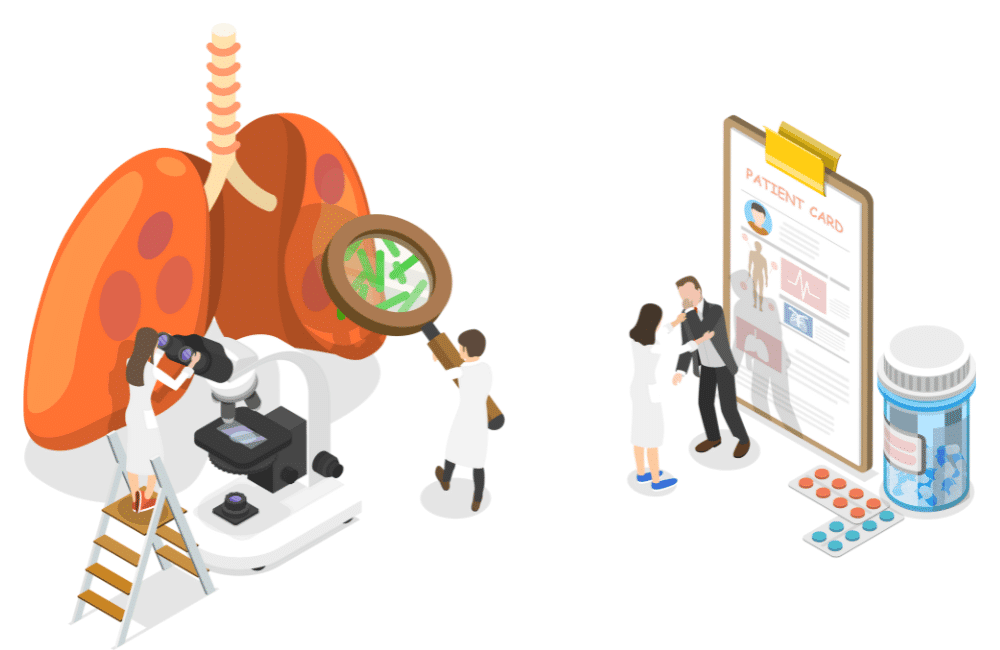Hello Folks! We are back with another guide on tuberculosis. Now you don’t need to worry. We covered you with the proper and effective treatment strategies for your tuberculosis.

Tuberculosis (TB) is an infectious disease caused by Mycobacterium tuberculosis. It primarily affects the lungs but can also impact other body parts. This article aims to provide comprehensive information about TB, its causes, symptoms, diagnosis, and treatment. We will delve into various treatment options available and highlight the importance of early detection and management. Let’s explore this topic to understand better and combat this global health concern.
What is Tuberculosis (TB)?
Tuberculosis, commonly known as TB, is caused by Mycobacterium tuberculosis, a slow-growing bacterium that primarily spreads through tiny droplets released into the air when an infected person coughs, sneezes, or talks. People nearby may inhale these droplets and become infected. Not everyone who contracts the TB bacteria will develop active TB; some individuals may have latent TB, where the bacteria remain inactive and non-contagious. However, latent TB can progress to active TB if the immune system weakens.

TB is a major global health issue, affecting millions of people worldwide, especially in low and middle-income countries where overcrowding, poor living conditions, and limited access to healthcare facilities contribute to its spread.
Symptoms of Tuberculosis (TB)
Tuberculosis, commonly known as TB, is a serious infectious disease caused by Mycobacterium tuberculosis. It primarily affects the lungs but can also spread to other organs, leading to severe health complications if not promptly treated. Recognizing the symptoms of TB is crucial for early detection and effective management of the disease.

- Persistent Cough: One of the most common and persistent symptoms of active TB is a cough lasting more than three weeks. This cough may start off as mild and gradually worsen over time. Individuals with TB may experience coughing fits throughout the day and night. The cough can be productive, producing sputum or phlegm; in some cases, it may contain blood. If you have a prolonged cough that does not seem to improve, seeking medical attention for proper evaluation is essential.
- Fatigue and Weakness: TB can cause significant fatigue and weakness in affected individuals. Even with sufficient rest, individuals may feel tired and lack the energy to perform daily activities. This fatigue can be debilitating and impact the overall quality of life.
- Unintended Weight Loss: Significant and unintentional weight loss is a characteristic symptom of active TB. The loss of appetite caused by the infection can decrease body weight over a relatively short period. Unexplained weight loss should not be ignored, as it can indicate an underlying health issue, including TB.
- Fever and Chills: Many individuals with active TB experience low-grade fever and chills. The body’s immune response to the infection can lead to an elevated body temperature, often accompanied by night sweats. These night sweats can be profuse and may result in dampened bedclothes.
- Chest Pain: Chest pain is another common symptom of TB, especially during breathing or coughing. The pain may be mild or severe and can vary in intensity. Chest discomfort can be attributed to inflammation and lung irritation caused by the TB infection.
It’s important to note that the symptoms of TB can be mild in the early stages, and they may be mistaken for other respiratory illnesses. However, if you experience any of these persistent symptoms, especially if they worsen or do not respond to typical treatments, it is crucial to consult a healthcare professional for further evaluation and testing.
Diagnosing Tuberculosis
Timely and accurate diagnosis is crucial for effective TB treatment. Various diagnostic methods are available:
- Tuberculin Skin Test (TST): A small amount of TB protein is injected under the skin, and a reaction is observed after 48-72 hours.
- Interferon-Gamma Release Assays (IGRAs): Blood tests that detect TB infection based on immune responses.
- Chest X-rays: Imaging to examine the lungs and identify abnormalities.
- Sputum Culture: A sample of sputum (mucus from the lungs) is cultured to identify TB bacteria.
- Nucleic Acid Amplification Tests (NAATs): Molecular tests that detect TB DNA in sputum.
Treatment Options for Tuberculosis
TB is treatable, and the standard treatment typically involves a combination of antibiotics. It is essential to complete the entire course of treatment to prevent drug resistance and ensure a successful recovery. The most commonly used TB drugs include:
- Isoniazid (INH)
- Rifampin (RIF)
- Ethambutol (EMB)
- Pyrazinamide (PZA)
The duration of treatment may vary depending on the type of TB infection, but it usually lasts for six to nine months. Drug-resistant TB may sometimes require more extended treatment with second-line medications.
Directly Observed Therapy (DOT)
Directly Observed Therapy (DOT) is often implemented to ensure treatment adherence and prevent drug resistance. DOT involves healthcare workers or trained individuals supervising patients during their medication intake. This method has proven effective in controlling the spread of TB and enhancing treatment success rates.
Preventive Measures
Prevention is essential, especially for individuals with a high risk of TB exposure. Some preventive measures include:
- Vaccination: Bacillus Calmette-Guérin (BCG) vaccine partially protects against TB, especially in children.
- Infection Control: Proper ventilation and isolation of infected individuals can minimize TB transmission.
- Education: Raising awareness about TB and its symptoms can lead to early detection and treatment.
Hey there, folks! Wanna keep your lungs in tip-top shape and steer clear of tuberculosis? Well, the secret’s simple: ditch the smokes and booze! It’ll do wonders for your health!”
Final Thoughts
Tuberculosis remains a significant global health challenge, affecting millions yearly. Early diagnosis and effective treatment are essential to control its spread and reduce its impact on communities worldwide. By understanding the symptoms and available treatment options, we can work towards eradicating TB and creating a healthier, TB-free world. Remember, if you suspect any symptoms of TB, seek immediate medical attention for a timely diagnosis and appropriate treatment.
In conclusion, tuberculosis requires attention and commitment from individuals and the global health community. By staying informed, taking preventive measures, and supporting those affected, we can make significant strides in combating TB and working towards a healthier and TB-free future.
Remember, early detection and treatment are crucial for a successful recovery. Together, we can make a difference in the fight against tuberculosis. Stay informed, stay healthy, and support those in need.

